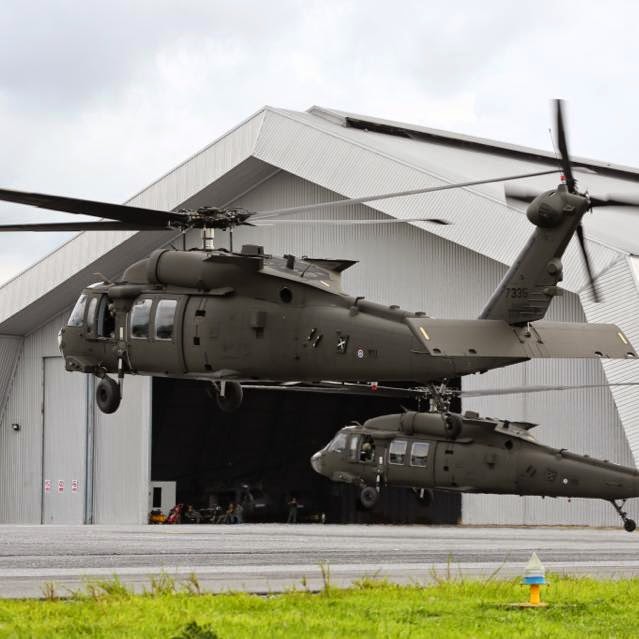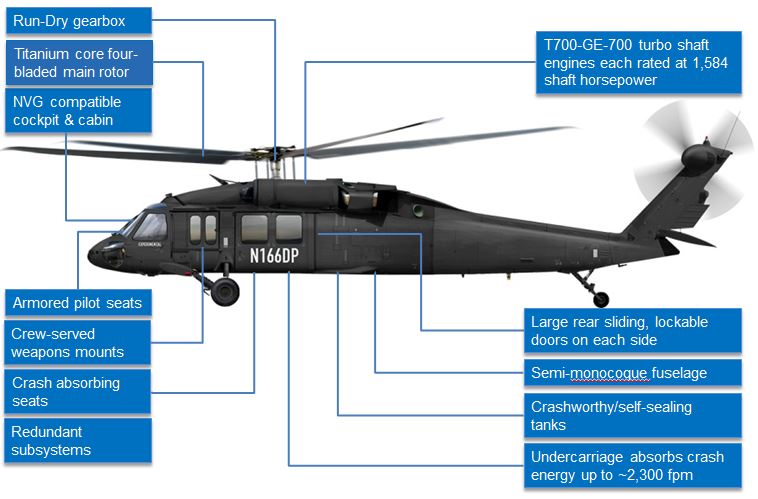Professional Insights: Enhancing Performance in UH 60 Helicopter Operations
Professional Insights: Enhancing Performance in UH 60 Helicopter Operations
Blog Article
Comprehending the Mechanics and Design Behind Uh 60 Helicopters
The UH-60 helicopter, frequently called the Black Hawk, stands as a pinnacle of contemporary rotorcraft modern technology, embodying a blend of durable design and intricate auto mechanics. From its beginning to its current iterations, the development of this airplane showcases a blend of development and functionality. As we peel off back the layers of the UH-60's layout, a globe of elaborate systems and precise design emerges. Recognizing the mechanics and engineering behind this flexible aircraft reveals a world where accuracy meets power, and where each component plays an important function in attaining trip.
History of UH-60 Helicopters
The background of UH-60 helicopters traces back to the late 1970s when the United States Army sought a advanced and functional energy helicopter to replace its aging fleet. In reaction to this need, the Sikorsky Airplane Company established the UH-60 Black Hawk helicopter. Introduced in 1979, the UH-60 quickly came to be a staple in armed forces operations as a result of its remarkable abilities.
The UH-60 was designed to master a variety of goals, including army transportation, medical discharge, electronic war, and unique operations. Its capacity to adapt to various functions made it a valuable property to the united state Army and various other military pressures around the globe
Over the years, the UH-60 system has gone through several upgrades and variants to enhance its efficiency and keep speed with developing goal requirements. These helicopters have actually seen comprehensive solution in conflicts such as the Gulf Battle, Afghanistan, and Iraq, showcasing their reliability and adaptability in diverse functional environments. The UH-60's abundant background is a testament to its long-lasting heritage as a premier energy helicopter.

Engine and Power Solutions
Utilizing advanced propulsion technology, UH-60 helicopters are equipped with innovative engine and power systems to make sure ideal performance and reliability in an array of functional situations. The UH-60, commonly called the Black Hawk, is powered by 2 General Electric T700-GE-701D engines, each capable of delivering up to 1,940 shaft horse power. These turboshaft engines supply the required drive for the helicopter to accomplish its objectives effectively, consisting of troop transport, clinical evacuation, and fight assistance.

Blades System and The Rules Of Aerodynamics
Exactly how do the blades system and aerodynamics of UH-60 helicopters add to their functional efficiency and flight capacities? The rotor system of the UH-60 helicopter plays a vital function in offering lift and propulsion.
Aerodynamics additionally play an essential duty in the efficiency of UH-60 helicopters. The structured fuselage and blades blade layout lower drag, allowing the helicopter to accomplish higher speeds and better fuel effectiveness. The wind resistant design of the UH-60 also contributes to its ability to operate in diverse ecological problems, consisting of hot temperature levels and high altitudes.
Avionics and Trip Control Solution

In its elaborate control with the blades system and aerodynamics of UH-60 helicopters, the avionics and flight control systems develop a vital network of modern technologies shaping the airplane's operational capacities. Avionics incorporate the electronic systems used for interaction, navigating, and monitoring various aircraft functions. In the UH-60, these systems consist of digital displays, interaction radios, general practitioner navigating, weather condition radar, and autopilot systems. These avionics systems give crucial information to the pilots, enhancing situational recognition and ensuring safe and click to read more reliable operation of the helicopter.
The trip control systems of the UH-60 are accountable for translating the pilot's inputs into the ideal changes to the rotor system, making certain secure flight and maneuverability. These systems include hydraulic actuators, servos, and computer systems that collaborate to control the tail and primary rotors, along with other flight control surface areas. By exactly taking care of the helicopter's trip dynamics, these systems allow pilots to execute a large range of goals, from transport and search-and-rescue to combat procedures, with precision and confidence.
Role and Applications in Aviation
The function and applications of avionics and trip control systems in aviation are indispensable to ensuring the safe and reliable procedure of airplane, including UH-60 helicopters. Avionics systems in UH-60 helicopters include a variety of electronic systems that aid in navigation, communication, tracking, and managing numerous aircraft functions. These systems include digital displays, autopilot systems, interaction radios, general practitioner navigating devices, and weather condition radar. Flight you could try this out control systems play a vital role in steering the helicopter airborne, keeping security, and ensuring specific movements. The fly-by-wire modern technology utilized in modern UH-60 helicopters translates pilot inputs into digital signals, which are after that analyzed by the flight control computer systems to adjust the aircraft's control surface areas. Furthermore, these systems incorporate safety and security features such as auto-pilot settings, surface awareness cautioning systems, and security augmentation systems to boost the overall safety and operational abilities of the UH-60 helicopters in different missions, consisting of troop transport, clinical evacuation, search and rescue, and airborne firefighting.
Conclusion
To conclude, the UH-60 helicopter is a functional aircraft with a rich history and progressed design. Its engine and power systems, blades system, aerodynamics, avionics, and flight control systems all work together to make it a reliable and reliable device. The UH-60's function and applications in air travel are substantial, varying from army procedures to search and rescue missions. Its continued development and use demonstrate click for more its significance in the field of air travel (uh 60).
In its elaborate coordination with the rotor system and the rules of aerodynamics of UH-60 helicopters, the avionics and trip control systems develop a crucial network of technologies forming the airplane's functional abilities.The flight control systems of the UH-60 are responsible for converting the pilot's inputs right into the proper modifications to the rotor system, ensuring stable trip and ability to move. Avionics systems in UH-60 helicopters include a variety of electronic systems that help in navigating, interaction, surveillance, and managing different aircraft features. In addition, these systems integrate safety attributes such as auto-pilot settings, terrain awareness cautioning systems, and stability enhancement systems to boost the total security and operational capabilities of the UH-60 helicopters in numerous objectives, including army transportation, clinical emptying, search and rescue, and aerial firefighting.
Its engine and power systems, rotor system, the rules of aerodynamics, avionics, and trip control systems all function with each other to make it a efficient and reliable maker.
Report this page